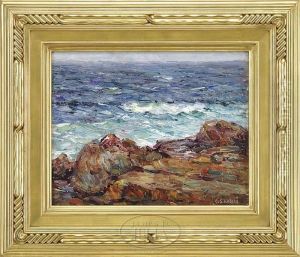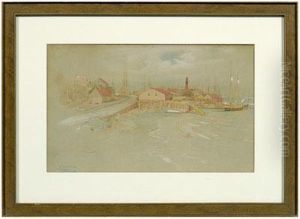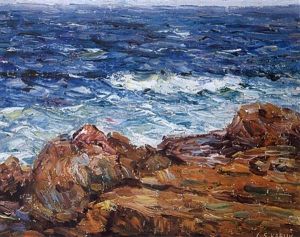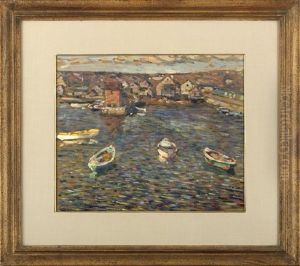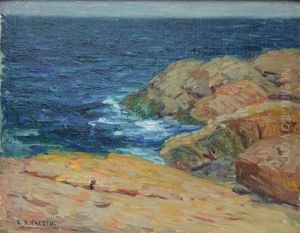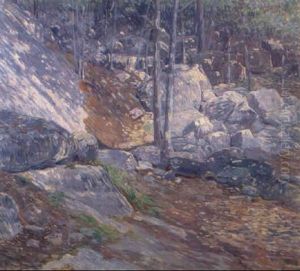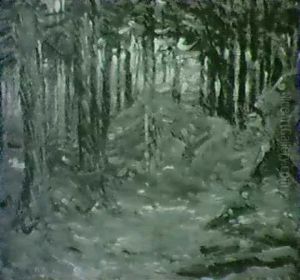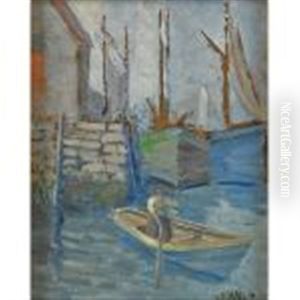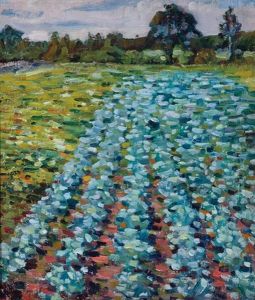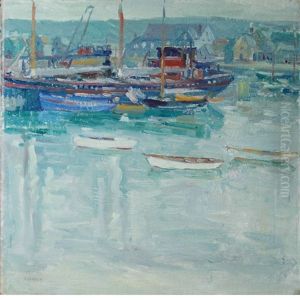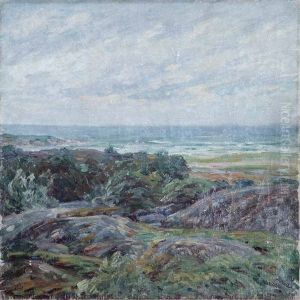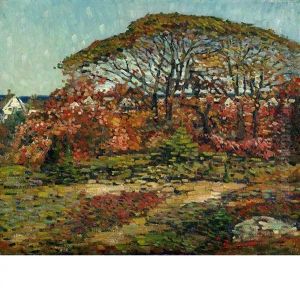Charles Salis Kaelin Paintings
Charles Salis Kaelin was an American painter known for his distinctive approach to Impressionism, an art movement characterized by small, thin yet visible brush strokes, open composition, emphasis on accurate depiction of light in its changing qualities, and ordinary subject matter. Born in Cincinnati, Ohio, in 1858, Kaelin was a pioneering figure in American Impressionism, though he also delved into Post-Impressionism, which is evident in his bold use of color and form.
Kaelin's artistic journey began at the Art Academy of Cincinnati, where he studied under the guidance of Thomas Satterwhite Noble and later, Frank Duveneck, who were both influential figures in his early development as an artist. His education continued in Europe, a typical path for American artists of his time, which allowed him to immerse himself in the vibrant art scenes of Paris and Munich.
Upon returning to the United States, Kaelin settled in Rockport, Massachusetts, a location that would become intrinsically linked with his most celebrated works. The rugged coastline, changing seasons, and unique light of Cape Ann provided endless inspiration for Kaelin, who captured the area's natural beauty in his paintings with a dynamic and innovative use of color and texture. His work during this period showcased his evolution from the more restrained tones of his early career to a vibrant palette that reflected the influence of Post-Impressionism on his style.
Kaelin's contribution to American art was not limited to his paintings. He was actively involved in the art community, participating in exhibitions and becoming a member of various art associations. Despite his active engagement with the artistic movements of his time, Kaelin remained somewhat of an outsider, choosing to focus on his personal exploration of color and light rather than aligning closely with any specific group or style.
Charles Salis Kaelin passed away in 1929, leaving behind a legacy that has continued to capture the attention of art historians and collectors. His work is included in several prestigious collections and museums, reflecting his status as a significant figure in the transition of American art from the academic traditions of the 19th century to the more modern and expressive techniques of the 20th century. Kaelin's dedication to exploring the boundaries of color and light has ensured his place in the annals of American art history as a pioneering spirit of the Impressionist and Post-Impressionist movements.





